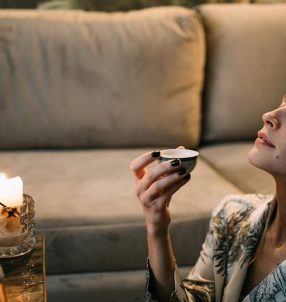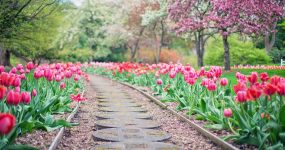
Over the past 20 years, a growing body of scientific evidence has suggested that simply being around plants can have an important impact on mental and physical health. Even while sitting at your desk, having houseplants within eyeshot has been reported to result in a measurable decrease in stress hormones, reduced feelings of anxiety and, according to a trial by the Norwegian University of Life Sciences, a 36% increase in pain threshold. If you are keen to reap these potential benefits in the dead of winter but are cursed by a brown thumb, worried about mess or frankly think it’s too much work, I have the perfect solution: air plants.
Hailing from the wilds of Latin America, plants in the genus Tillandsia have evolved the remarkable ability to absorb all the water and nutrients they need from the air. Specialised hair-like structures on their leaves known as trichomes act like super-efficient sponges to absorb ambient moisture and trap nutrients from floating particles of dust. This silvery fuzz gives the plants an exotic, animal-like appearance. Their ability to live off air makes them the ultimate houseplant – an ornament which, in the right conditions, needs next to no work.
Another key benefit to this remarkable strategy is that air plants do not require pots, compost or even a significant root system. The only function of their tiny roots is to anchor the plants to a solid surface where they have access to enough light and air. In the wild they hug tree branches, cluster on rocky outcrops and even cling to telephone wires, meaning you can attach them to pretty much any surface at home that takes your fancy. I mounted some on rustic cork bark (using discreet floristry wire), but have also seen them attached to driftwood or fridge magnets. The sky – and the frontiers of good taste – are the only limits.
How to grow Tillandsia
Tillandsia require a warm room at about 20C with good air circulation. Most species prefer a bright but indirect light source, as prolonged exposure to direct sun in summer can scorch leaves. Finally, as the air in centrally heated rooms in midwinter can be drier than even the Sahara, a very occasional spritz of water (as little as every month or two) can be useful to keep your plants in tip-top condition. Your little Tillandsias will even tell you when they need this, by their leaves curling inwards and becoming increasingly silver. Many sources still advise a monthly soaking of the plants by dousing them in a bucket of water before drying them off completely. But, according to top UK growers, the biggest cause of Tillandsia failure is over-watering.
[“source-theguardian”]
























